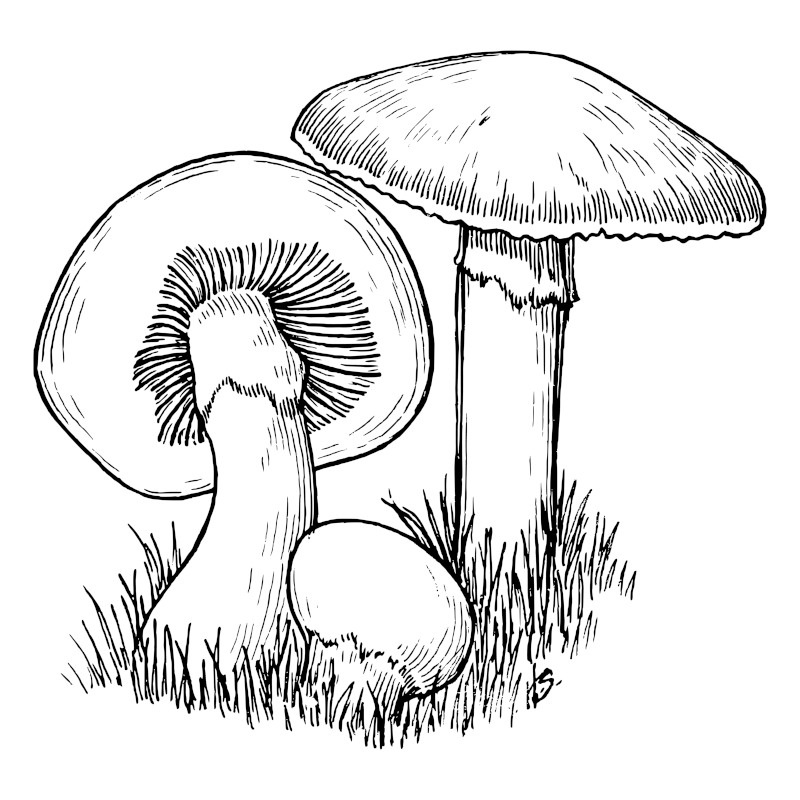Those looking for drawing ideas, or some easy suggestions for their art, how about mushroom drawings? These fun items have been used in many different ways, including book illustration and television.
Introduction to Mushroom Drawings
In this article we will offer many ideas for your work, with a selection of mushroom art, covering different styles, techniques and cultures. You will see the many different approaches taken by artists over the ages, and hopefully find inspiration for your own work. Each image comes with a description of it, and information on the artist, where that is available. Images are provided from the public domain, and so can be used for any purpose you need - all are courtesy of Rawpixel.
The images featured here will offer all sorts of different ideas, and there is also further discussion about mushroom art further down the page, including a number of different themes related to this topic, including the historical use of mushrooms in art, and their wider use in society over the ages, and across different civilizations. Those short on inspiration should also check out our articles on horse paintings, fish drawings and the history of art.
List of Mushroom Drawings and Paintings
Find below a wide selection of sketches, illustrations and simple paintings which depict mushrooms in a number of different ways. We have covered a wide number of art movements, in order to suit different tastes and we recommend browsing these in order to find new ideas on composition, perspective, and also subject which could be used in your own work. These images can be used to trace, or quickly sketch or simply to spark ideas in your own mind.
Easy Simple Mushroom Drawing
To start things off, we have two large mushrooms, alongside a smaller one. They are set within some light grass, and the artist deliberately uses two different poses in order to display different details of the same organism - one head stands straight, whilst the other mushroom is angled away from us, allowing us to see underneath. The sketch is produced in a vintage style and so might date to several centuries ago. This drawing features enough detail to learn from, whilst being simple enough to allow us to imagine creating our own versions of it. A careful use of line also allows us to understand the contours of the mushroom head, which in this species is fairly flat and smooth.
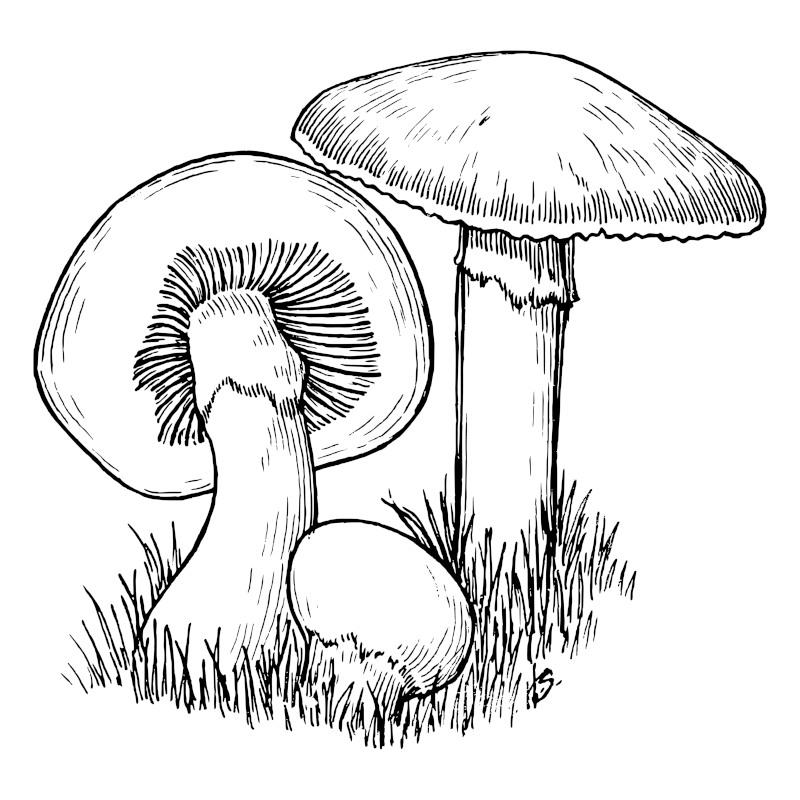 Easy Simple Mushroom Drawing (image provided by Rawpixel)
Easy Simple Mushroom Drawing (image provided by Rawpixel)
Sketch of Several Mushrooms in a Group
This sketch features enlarged mushrooms in a group together. Different heights provide aesthetic interest, and the artist also incorporates strong contrasts in lighting by using intensive lines which are drawn close together. The angle is from ground level, as we look up towards the heads of the larger mushrooms. Interestingly, the artist has included mushroom roots which helps us to understand how these incredible organisms spread and grow over time, when normally we will just come across them growing randomly in a forest, or perhaps find them in a supermarket, in what is a particularly artificial environment. The use of different sized mushrooms almost gives an impression here of a family of mushrooms, with the central figure proudly supporting its younger neighbors.
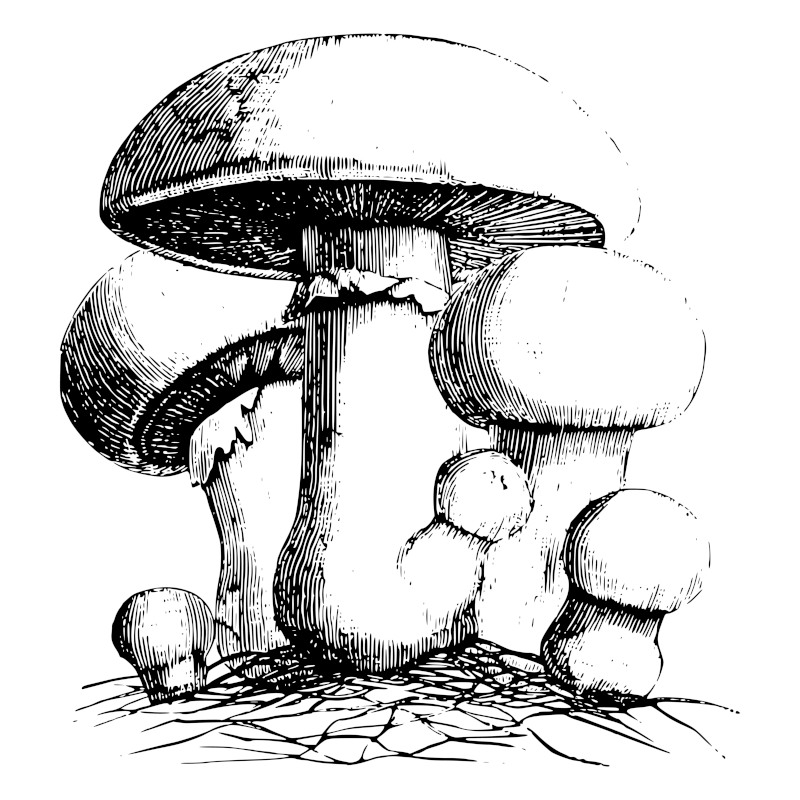 Sketch of Several Mushrooms in a Group (image provided by Rawpixel)
Sketch of Several Mushrooms in a Group (image provided by Rawpixel)
Red Headed Mushroom with White Spots
This drawing completes a more cartoon-style mushroom, and this look is often used in children's books. The red head with white spots works well with illustrated books, bringing a fun and bright style to the design. In reality, most mushrooms do not look like this, but is how many children will think a mushroom looks. In this example the large mushroom leans to our right, and detail is relatively reduced, making it an excellent way of learning how to draw a simple depiction of a mushroom. More complex versions may seem intimidating for younger artists, and simple versions like this can also be traced and worked from with just a pencil or pen.
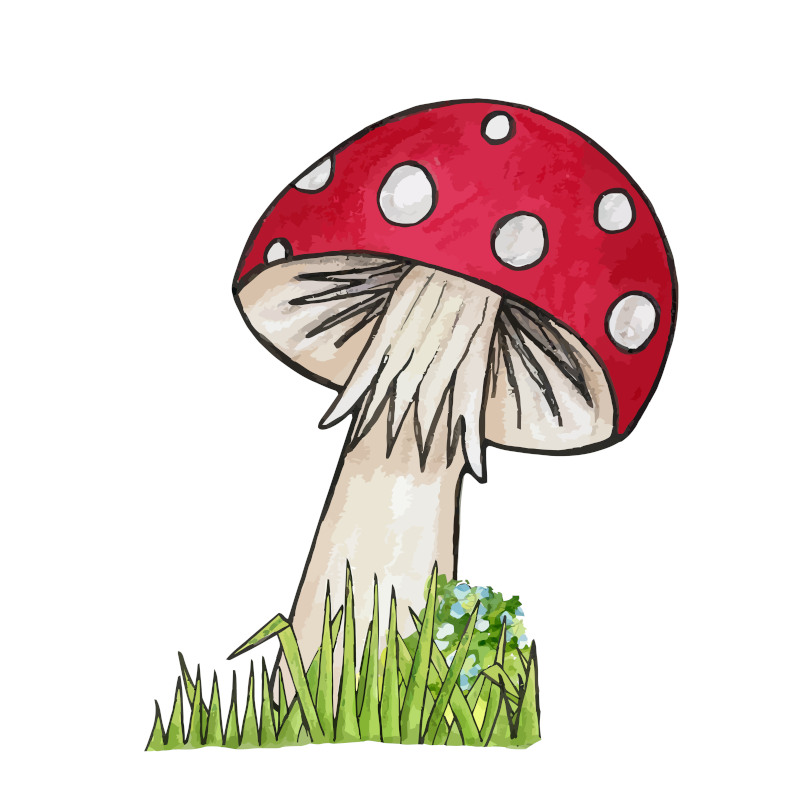 Red Headed Mushroom with White Spots (image provided by Rawpixel)
Red Headed Mushroom with White Spots (image provided by Rawpixel)
19th Century Mushroom Study by Charles Dessalines D'Orbigny
These delightful 19th century drawings capture many observations of a mushroom and were completed by the respected artist, Charles Dessalines D'Orbigny. You will notice the lengths that the artist goes to, perhaps in conjunction with an expert, to feature different findings on this particular type. The French title is used, alongside the original latin, followed by a number of supporting drawings which display other findings on this particular mushroom. The artist would continue to work in this manner, completing many illustrations and then put them together for respected publications that served as excellent references.
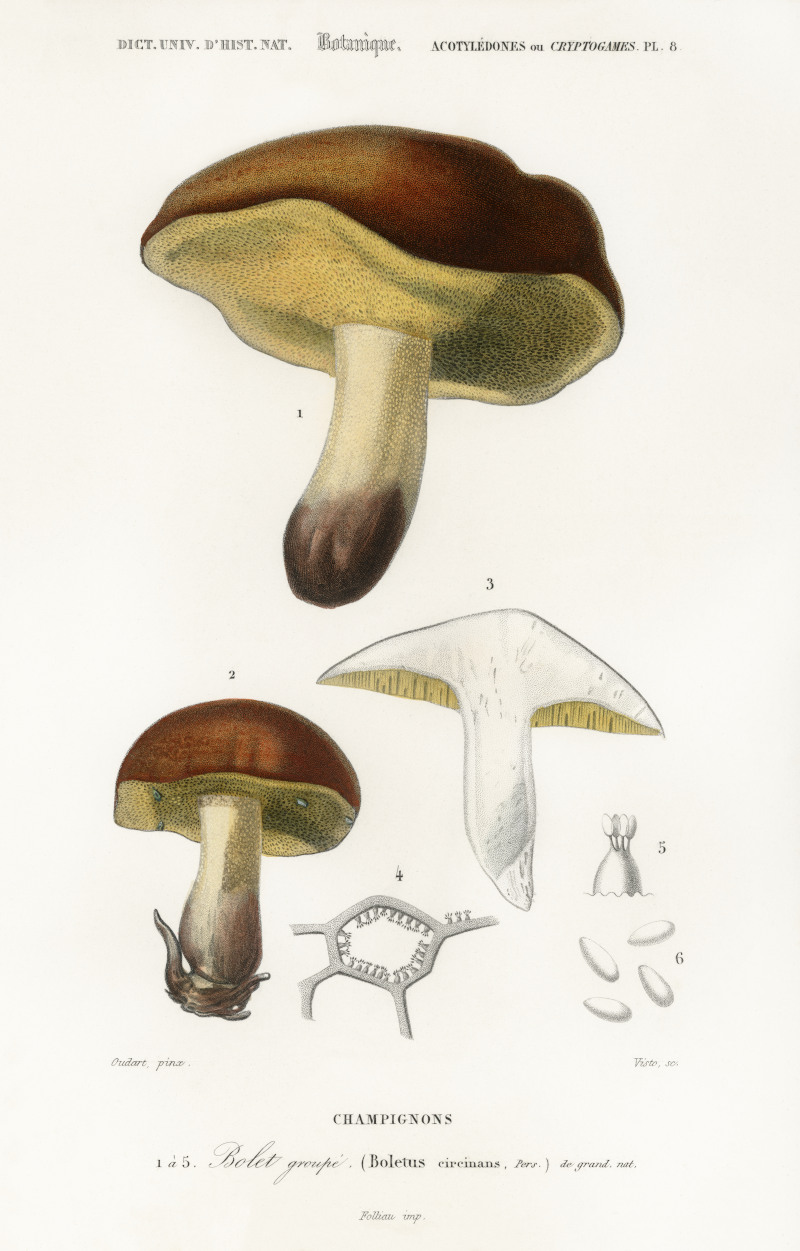 19th Century Mushroom Study by Charles Dessalines D'Orbigny (image provided by Rawpixel)
19th Century Mushroom Study by Charles Dessalines D'Orbigny (image provided by Rawpixel)
Detailed Field Mushroom Illustrations with Shading, Light and Color
This is amongst the most detailed of all mushroom drawings in this article, with a high intensity of line used to create texture, form and contours. The circular width of the mushroom heads are beautifully recreated within this static, two dimensional art form and the lower image allows us to see the intricate detail which exists underneath the flower head. This artistic style is more typical of vintage mushroom art, where as today we tend to find more creative, abstract versions which are more akin to art than science.
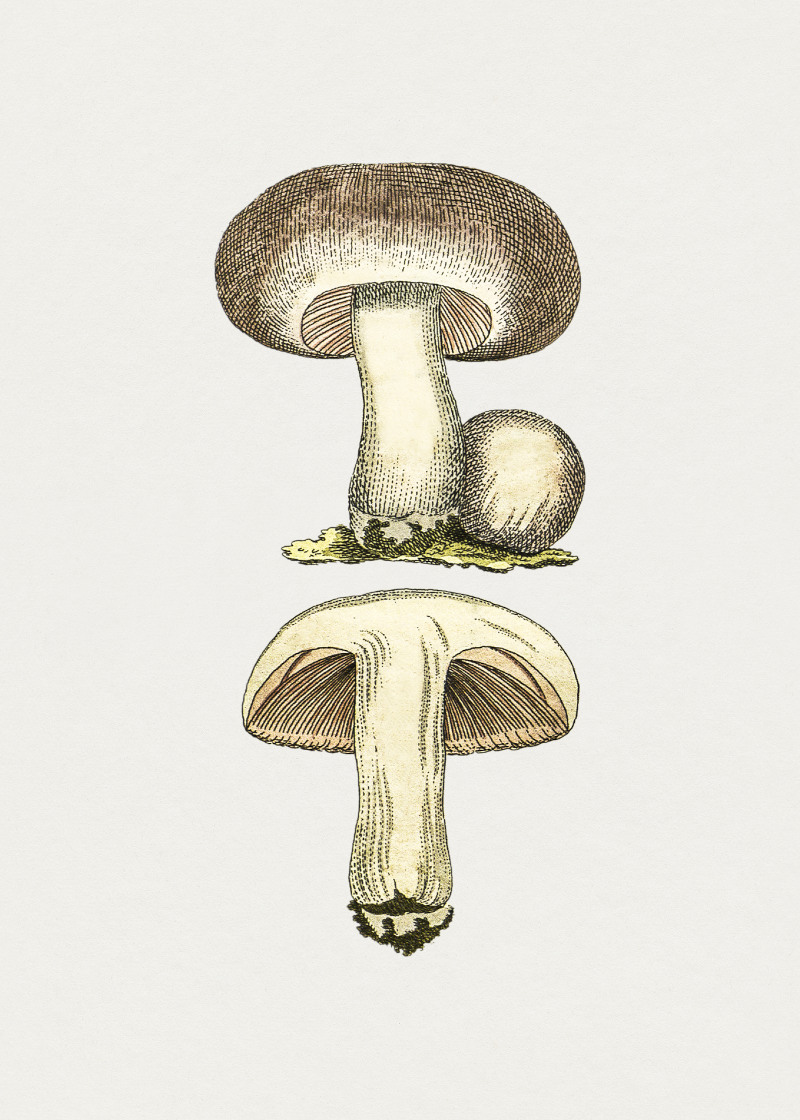 Detailed Field Mushroom Illustrations with Shading, Light and Color (image provided by Rawpixel)
Detailed Field Mushroom Illustrations with Shading, Light and Color (image provided by Rawpixel)
Vintage Mushroom Sketch with Spotting Heads
This image shows a more artistic interpretation, where lines are used to simulate the shine of sunlight across different sections of the mushroom. The artist adds a little color, but not much, with two tones used, cream for the mushrooms, and some touches of green for some grass found aaround their stalks. The style of this piece would suggest a vintage era, perhaps from the 18th or 19th century, though there is none of the scientific precision that was common within mushroom art at this time.
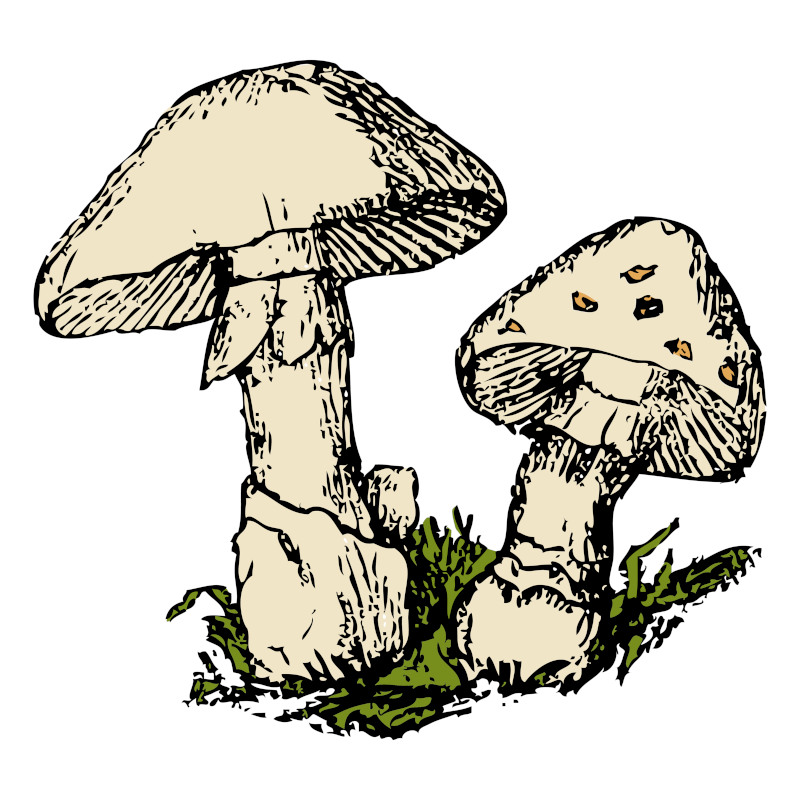 Vintage Mushroom Sketch with Spotting Heads (image provided by Rawpixel)
Vintage Mushroom Sketch with Spotting Heads (image provided by Rawpixel)
Mushroom Collage Loose Painting
Here the artist provides a vintage but loose painting in which the brushwork is completed in a relaxed manner. The mushroom is enlarged in order to add as much detail as possible, and an orangey-red tone is chosen for the head, which works beautifully from an aesthetic point of view. Many children's books will make use of red mushrooms, and that has become the default type for artists to use, even though many thousands of different types exist and have been documented individually ever since around the 18th century.
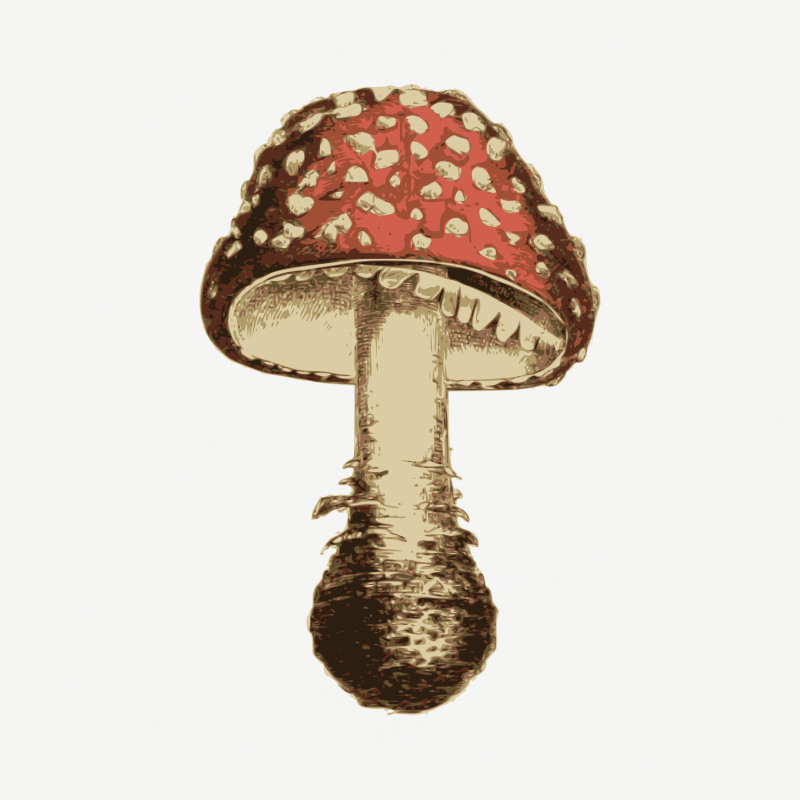 Mushroom Collage Loose Painting (image provided by Rawpixel)
Mushroom Collage Loose Painting (image provided by Rawpixel)
Vintage Cortinarius Purpureus Mushroom
This beautifully crafted artwork delivers each and every detail of a Cortinarius Purpureus mushroom, capturing the texture of the stalk as well as the white under section of the head. The head is a single tone of orange, with a drop in the centre which is shown through a clever use of shadowing. THe artist chooses to put two images together, allowing him to show its detail from different angles, and some other artists achieve the same by covering a group together, as if discovered in a more natural setting.
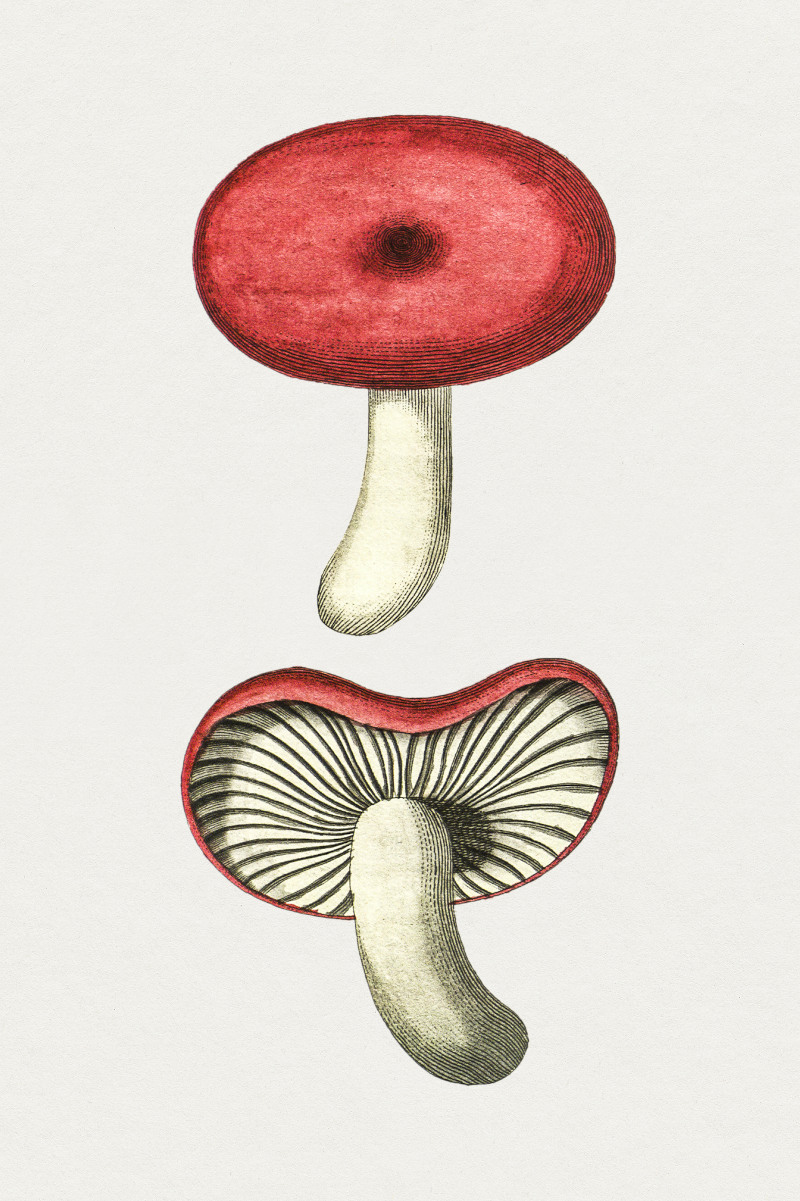 Vintage Cortinarius Purpureus Mushroom (image provided by Rawpixel)
Vintage Cortinarius Purpureus Mushroom (image provided by Rawpixel)
Hand Drawn Parasol Mushroom
Here we find some beautifully speckled parasol mushrooms in a charming illustration. There is much to see here, thanks to the quality of the work, but also the style of the particular mushroom type which features striping across the stalk as well as a slightly hairy head, along with an unusual pattern to the head which slowly leads towards the centre, which itself is raised. The parasol mushroom is highly regarded for its beauty, and it is perhaps surprising that more artists have not taken advantage of its inherent beauty. The accuracy is so incredible, that one can almost imagine reaching out and touching these two mushrooms.
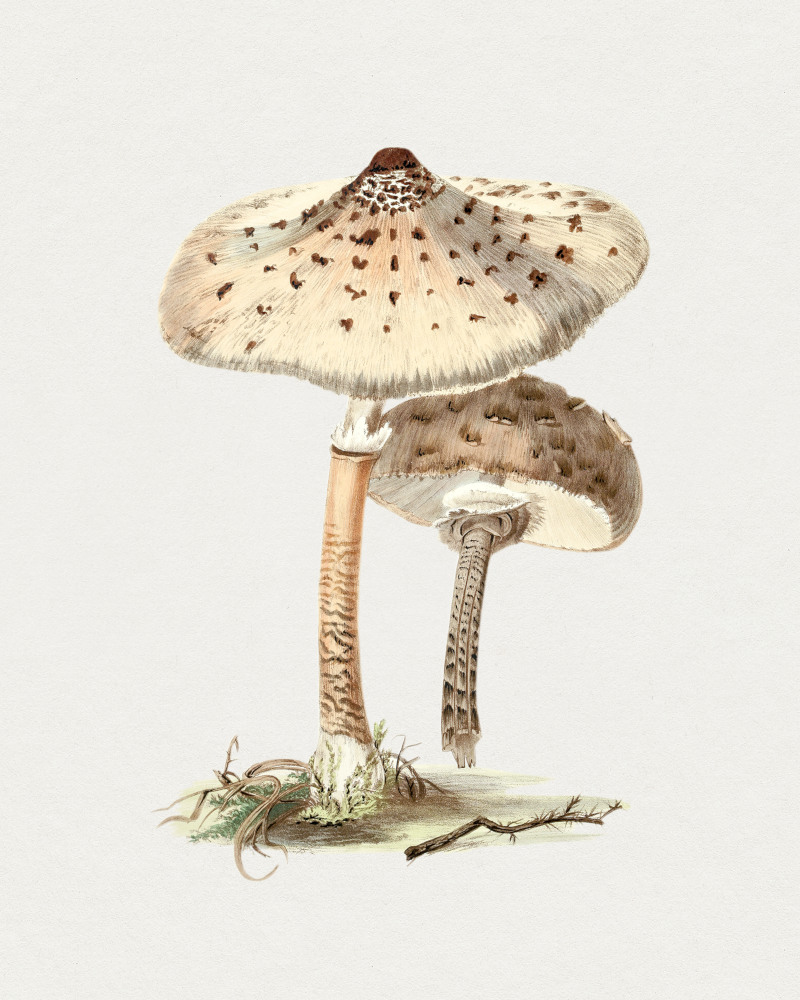 Hand Drawn Parasol Mushroom (image provided by Rawpixel)
Hand Drawn Parasol Mushroom (image provided by Rawpixel)
Hand Drawn Field Mushroom Illustrations
This charming drawing attempts to recreate the natural habitat of mushrooms as they grow in the wild. We have all come across mushrooms and other fungi in this way, after wandering through a forest and finding them quietly going about their business in a darkened corner, or beside some fallen tree. The artist chooses to place the mushrooms in different positions in order to make the work more interesting, though this also enables them to show different parts of the organism, as well as experiemnting with the impact of light.
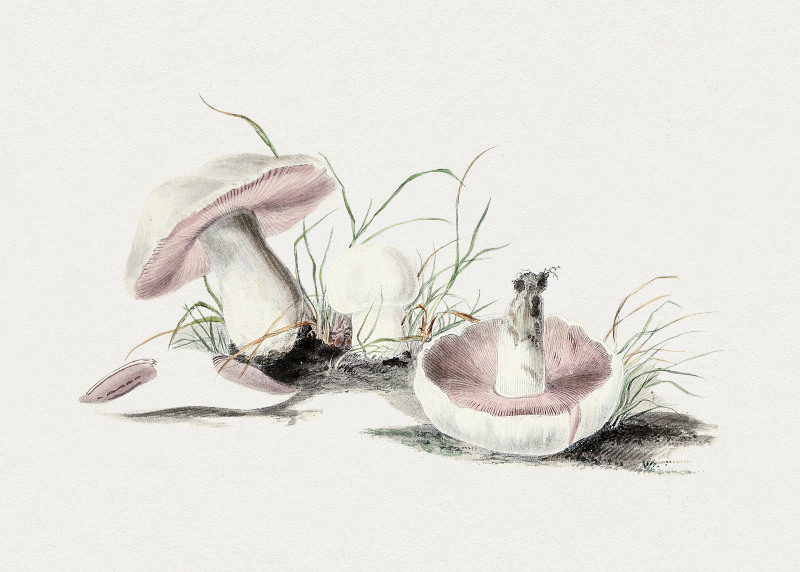 Hand Drawn Field Mushroom Illustrations (image provided by Rawpixel)
Hand Drawn Field Mushroom Illustrations (image provided by Rawpixel)
Introduction to Mushroom Art
Mushroom art has celebrated the unique beauty of fungi for centuries, serving as both creative art, but also in educating us about this weird and wonderful organism. Symbolism has been attached to the mushroom in previous centuries, across different civilizations, whilst in more recent times we have seen mushrooms appear in illustrative art and publications, most commonly within children's books. There is also a good number of tools used, ranging from modern digital art to paper, pen, ink and painting materials.
Some of this art has encouraged us to learn more about this organism, which can provide food staples to millions of people, but also offers potential dangers with some varieties - research is therefore key but there is no danger whatsoever in enjoying the many beautiful artworks displayed across this article. Hopefully, these will inspire you to create some works of your own, and continue the success of this artistic sub-genre.
The images provided previously gives a good example of vintage mushroom art, which helped us all to learn about these beautiful items, and also to see their variety across different species. There is also the use of angles and composition with variations to achieve many different results.
A Brief History of Mushroom Depictions
In some ancient civilizations, mushrooms were used within sacred rituals, perhaps caused by the effects that they can have when consumed. They would not feature within art particularly regularly at this stage, with animals and humans normally preferred instead. Botanical illustrations would not become widespread until as late as the Renaissance era, and these beautiful organisms would be used as a means to practicing technique, as well as documenting different species of mushroom. The likes of Durer and Da Vinci sought to raise the standards of drawing and focused on accuracy, which was a key element in the success of this artistic period which ultimately spread to all corners of the European continent.
Mycologists and artists across the 18th and 19th century then combined to document, visually, the many different mushroom types, leading to some highly successful publications that could still be used as references today. In more recent years these have been added to and evolved as our knowledge has grown, with new items discovered. Pierre-Joseph Redouté and James Sowerby were two respected contibutors in this period, whilst botanical illustrations more generally became highly regarded in the UK and France in particular.
As the aesthetic qualities of mushrooms became more well known, so these publications would start to become more about the art, and less about education. Some stunning illustrations appeared in the Victorian era, and this would slowly lead to the use of mushrooms in children's books which started to occur in the 20th century. We would also continue the movement away from education, which had already been comprehensively served, and move towards more creative interpretations of mushrooms, which matched the wider evolution of European and American art during the 20th century, and this transition has continued up to the present day.
The Role of Science and Education in Mushroom Art
Science can be more easily sold to the public through the medium of art. Detailed texts can be hard to stomach, but when more carefully laid out and joined by complementary images, then the presentation will can be consumed with ease. This is particularly the case when educating children, where alternative forms of education are necessary in order to build and retain their interest. Efforts have been made to document lesser known mushroom types through the collaboration of experts and artists alike.
The identification, accurately, of mushrooms is particularly important. Incorrect observations can result in people consuming mushrooms that are not good for them, and this can cause considerable harm. Therefore, as part of their identification, images can help in mushroom guides, and so it is highly important that artists work to a high level of precision themselves, hopefully working alongside experts. Most botanical art does not hold such danger as mushrooms, and many species of this organism can also appear fairly similar, but with consderably different impacts on our health. It is best to stick to mushroom art, and enjoy the beauty of these items on your wall.
Mushroom Art and Environmental Awareness
Artists have been going to greater and greater lengths to raise awareness about environmental concerns, and have moved beyond traditional poster art into new and exciting disciplines. Firstly, huge sculptures can bring their cause to a three dimensional format that is hard to ignore, and mushrooms can be fun at an enlarged size which will remind some of various children's stories that they might have encountered in their childhood. By promoting the existence of any species, you are naturally encouraging others to protect them, and art remains an excellent tool by which to get across various messages regarding conservation.
Techniques and Mediums in Mushroom Drawing
One can capture mushrooms in many different mediums, with beginners normally making use of pencils and charcoal. Mushroom photography rose in significance in the 20th century, and became a more precise way of documenting new organisms. Watercolors have also been popular for adding color, even since the times of the Renaissance and many examples remain from Albrecht Durer's watercolor paintings of various botanical items. The advancements made in this genre were predominantly formed in a simple use of chalk and charcoal, with Leonardo underlining the importance of observation and technical practice.
A further tip for drawing mushrooms would be to seek advice from others. Even those unfamiliar with art technique should be able to let you know how accurate your work is. This can give some pointers on how to improve, but subjective questions around whether someone likes your work, may not be a helpful way of improving. Sharing art online can also bring in feedback quickly, though be careful who you share your work with, as some may not be polite.
Exploring the Diversity of Mushroom Species Through Art
Mushrooms can be captured within art from a variety of microsopic levels. Many prefer what is visible to the human eye, showing what we would all see naturally. Others focus on the deep microscopic world, illustrating spores, mycelium, and other elements that we would not see normally. These can be turned into abstract forms and patterns, that might even lose their original connections and just be used as a natural display of color and form. Georgia O'Keeffe worked in a similar manner, focusing on details within flower heads, that could serve as abstract forms of color.
Another aspect of artistic interest is in the seasons, and their effect on the appearance of individual mushrooms. In a similar manner to how Impressionist artists would study the effects of light on the French countryside, as well as cityscape architecture, so mushroom artists have attempted to study and document the changing tones and behavior of various organisms across the year.
Tips for Creating Your Own Mushroom Art
Study and observation are key skills in drawing fungi accurately. You can learn from the work of others, browsing publications and illustrations for ideas and tips. Those fortunate enough to have access to mushrooms can also sketch them in a still life manner, or alternatively you might capture them within their natural habitat. Those looking to understand their changing attributes over time could return to the same locations time and time again, or even grow some of these species within your own garden so that they are more easily accessible.
In terms of artistic tools, for beginners it is best to start simply - a simple pencil and paper is enough to starting drawing, and painting methods with oil or watercolor should be left until you are further along in your artistic evolution. You might also experiment with compositional techniques, starting by drawing the whole mushroom, and then later cropping down to individual details for different results. You might also experiment by combining mushrooms with other complementary items, such as plants that grow close by.
The Future of Mushroom Art: Trends and Innovations
Many exciting interpretations have been made with mushrooms over the centuries, and in recent times most developments have been related to digital art, both in their production, but also in how they are promoted. It is likely that the future of mushroom art will see the introduction of AI, where anyone can create their own art using just a few prompts from their computer. Others will also use their devices to draw on a tablet or mobile, before later amending the piece on the same device using software. This enables us all to work whenever we like, and also to share items globally at the touch of a button.
Bioart is a niche art form in which living organisms are incorporated into an artist's work, bringing a whole new meaning to what art actually is. Some have allowed butterflies to appear from their prints, for example, and this concept has to extended to mushrooms. Combining visual art with living organisms seems bizarre, but is a beautiful conterbalance to the influx of digital art and photography, where machines take a key role instead.



